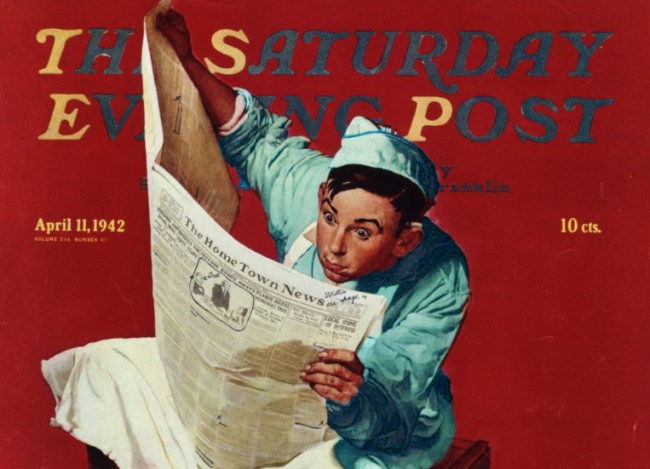
Chinese students begin protests at Tiananmen Square on April 21, 1989
Chinese students begin protests at Tiananmen Square: Six days after the death of Hu Yaobang, the deposed reform-minded leader of the Chinese Communist Party, some 100,000 students gather at Beijing’s Tiananmen Square to commemorate Hu and voice their discontent with China’s authoritative communist government. The next day, an official memorial service for Hu Yaobang was held in Tiananmen’s Great Hall of the People, and student representatives carried a petition to the steps of the Great Hall, demanding to meet with Premier Li Peng. The Chinese government refused such a meeting, leading to a general boycott of Chinese universities across the country and widespread calls for democratic reforms.
Ignoring government warnings of violent suppression of any mass demonstration, students from more than 40 universities began a march to Tiananmen on April 27. The students were joined by workers, intellectuals, and civil servants, and by mid-May more than a million people filled the square, the site of communist leader’s Mao Zedong’s proclamation of the People’s Republic of China in 1949. On May 20, the government formally declared martial law in Beijing, and troops and tanks were called in to disperse the dissidents. However, large numbers of students and citizens blocked the army’s advance, and by May 23 government forces had pulled back to the outskirts of Beijing.
On June 3, with negotiations to end the protests stalled and calls for democratic reforms escalating, the troops received orders from the Chinese government to reclaim Tiananmen at all costs. By the end of the next day, Chinese troops had forcibly cleared Tiananmen Square and Beijing’s streets, killing hundreds of demonstrators and arresting thousands of protesters and other suspected dissidents. In the weeks after the government crackdown, an unknown number of dissidents were executed, and communist hard-liners took firm control of the country.
The international community was outraged at the incident, and economic sanctions imposed by the United States and other countries sent China’s economy into decline. However, by late 1990, international trade had resumed, thanks in part to China’s release of several hundred imprisoned dissidents.
History Channel / Wikipedia / Encyclopedia Britannica / ABC News Australia / The Atlantic
/ Chinese students begin protests at Tiananmen Square on April 21, 1989 (YouTube) 

Red Baron killed in action on April 21, 1918
Red Baron killed in action: In the skies over Vauz sur Somme, France, Manfred von Richthofen, the notorious German flying ace known as “The Red Baron”, is killed by Allied fire.
Richthofen, the son of a Prussian nobleman, switched from the German army to the Imperial Air Service in 1915. By 1916, he was terrorizing the skies over the western front in an Albatross biplane, downing 15 enemy planes by the end of the year, including one piloted by British flying ace Major Lanoe Hawker.
In 1917, Richthofen surpassed all flying ace records on both sides of the western front and began using a Fokker triplane, painted entirely red in tribute to his old cavalry regiment. Although only used during the last eight months of his career, it is this aircraft that Richthofen was most commonly associated with and it led to an enduring English nickname for the German pilot–the Red Baron.
On April 21, 1918, with 80 victories under his belt, Richthofen penetrated deep into Allied territory in pursuit of a British aircraft. The Red Baron was flying too near the ground–an Australian gunner shot him through his chest, and his plane crashed into a field alongside the road from Corbie to Bray. Another account has Captain A. Roy Brown, a Canadian in the Royal Air Force, shooting him down. British troops recovered his body, and he was buried with full military honors. He was 25 years old. In a time of wooden and fabric aircraft, when 20 air victories ensured a pilot legendary status, Manfred von Richthofen downed 80 enemy aircraft.
History Channel / Wikipedia / Encyclopedia Britannica / Richthofen.com / The Aerodrome
/ Red Baron killed in action on April 21, 1918 (YouTube) 

Texas Revolution, Battle of San Jacinto: Republic of Texas forces defeat Mexican troops on April 21, 1836
Texas Revolution, Battle of San Jacinto: Republic of Texas forces defeat Mexican troops: On April 21, 1836, during Texas’ war for independence from Mexico, the Texas militia under Sam Houston (1793-1863) launched a surprise attack against the forces of Mexican General Antonio Lopez de Santa Anna (1794-1876) at the Battle of San Jacinto, near present-day Houston, Texas. The Mexicans were thoroughly routed, and hundreds were taken prisoner, including Santa Anna. In exchange for his freedom, Santa Anna signed a treaty recognizing Texas’ independence.
Battle of San Jacinto: Background
After gaining independence from Spain in the 1820s, Mexico welcomed foreign settlers to sparsely populated Texas, and a large group of Americans led by Stephen F. Austin (1793-1836) settled along the Brazos River. The Americans soon outnumbered the resident Mexicans, and by the 1830s attempts by the Mexican government to regulate these semi-autonomous American communities led to rebellion. In March 1836, in the midst of armed conflict with the Mexican government, Texas declared its independence from Mexico.
The Texas volunteer soldiers initially suffered defeat against the forces of General Antonio Lopez de Santa Anna–Sam Houston’s troops were forced into an eastward retreat, and the Alamo (a fort near present-day San Antonio that was occupied by a small but determined group of Texas forces starting in December 1835) fell in March 1836.
Battle of San Jacinto: April 1836
From March to May, Mexican forces once again occupied the Alamo. For the Texans, the Battle of the Alamo became a symbol of heroic resistance and a rallying cry in their struggle for independence. On April 21, 1836, Sam Houston and some 800 Texans defeated Santa Anna’s Mexican force of approximately 1,500 men at the Battle of San Jacinto, shouting “Remember the Alamo!” as they attacked. The victory ensured the success of Texan independence: In mid-May, Santa Anna, who had been taken prisoner during the battle, signed a peace treaty at Velasco, Texas, in which he recognized Texas’ independence in exchange for his freedom. However, the treaty was later abrogated and tensions built up along the Texas-Mexico border.
The citizens of the so-called Lone Star Republic elected Sam Houston as president and endorsed the entrance of Texas into the United States. However, the likelihood of Texas joining the Union as a slave state delayed any formal action by the U.S. Congress for more than a decade. Finally, in 1845, President John Tyler (1790-1862) orchestrated a compromise in which Texas would join the United States as a slave state. On December 29, 1845, Texas entered the United States as the 28th state, broadening the differences in America over the issue of slavery and igniting the Mexican-American War (1846-48).
History Channel / Wikipedia / Encyclopedia Britannica / Texas State Historical Assocition (TSHA) / San Jacinto Museum.org
/ Texas Revolution, Battle of San Jacinto: Republic of Texas forces defeat Mexican troops on April 21, 1836 (YouTube) 

Rome founded on April 21, 753 B.C.
Rome founded: According to tradition, on April 21, 753 B.C., Romulus and his twin brother, Remus, found Rome on the site where they were suckled by a she-wolf as orphaned infants. Actually, the Romulus and Remus myth originated sometime in the fourth century B.C., and the exact date of Rome’s founding was set by the Roman scholar Marcus Terentius Varro in the first century B.C.
According to the legend, Romulus and Remus were the sons of Rhea Silvia, the daughter of King Numitor of Alba Longa. Alba Longa was a mythical city located in the Alban Hills southeast of what would become Rome. Before the birth of the twins, Numitor was deposed by his younger brother Amulius, who forced Rhea to become a vestal virgin so that she would not give birth to rival claimants to his title. However, Rhea was impregnated by the war god Mars and gave birth to Romulus and Remus. Amulius ordered the infants drowned in the Tiber, but they survived and washed ashore at the foot of the Palatine hill, where they were suckled by a she-wolf until they were found by the shepherd Faustulus.
Reared by Faustulus and his wife, the twins later became leaders of a band of young shepherd warriors. After learning their true identity, they attacked Alba Longa, killed the wicked Amulius, and restored their grandfather to the throne. The twins then decided to found a town on the site where they had been saved as infants. They soon became involved in a petty quarrel, however, and Remus was slain by his brother. Romulus then became ruler of the settlement, which was named “Rome” after him.
To populate his town, Romulus offered asylum to fugitives and exiles. Rome lacked women, however, so Romulus invited the neighboring Sabines to a festival and abducted their women. A war then ensued, but the Sabine women intervened to prevent the Sabine men from seizing Rome. A peace treaty was drawn up, and the communities merged under the joint rule of Romulus and the Sabine king, Titus Tatius. Tatius’ early death, perhaps perpetrated by Romulus, left the Roman as the sole king again. After a long and successful rule, Romulus died under obscure circumstances. Many Romans believed he was changed into a god and worshipped him as the deity Quirinus. After Romulus, there were six more kings of Rome, the last three believed to be Etruscans. Around 509 B.C., the Roman republic was established.
Another Roman foundation legend, which has its origins in ancient Greece, tells of how the mythical Trojan Aeneas founded Lavinium and started a dynasty that would lead to the birth of Romulus and Remus several centuries later. In the Iliad, an epic Greek poem probably composed by Homer in the eighth century B.C., Aeneas was the only major Trojan hero to survive the Greek destruction of Troy. A passage told of how he and his descendants would rule the Trojans, but since there was no record of any such dynasty in Troy, Greek scholars proposed that Aeneas and his followers relocated.
In the fifth century B.C., a few Greek historians speculated that Aeneas settled at Rome, which was then still a small city-state. In the fourth century B.C., Rome began to expand within the Italian peninsula, and Romans, coming into greater contact with the Greeks, embraced the suggestion that Aeneas had a role in the foundation of their great city. In the first century B.C., the Roman poet Virgil developed the Aeneas myth in his epic poem the Aeneid, which told of Aeneas’ journey to Rome. Augustus, the first Roman emperor and emperor during Virgil’s time, and Julius Caesar, his great-uncle and predecessor as Roman ruler, were said to be descended from Aeneas.
History Channel / Wikipedia / Encyclopedia Britannica / Ancient History Encyclopedia.EU / National Geographic
/ Rome founded on April 21, 753 B.C. (YouTube) 

Understanding Military Terminology - Multinational force
(DOD) A force composed of military elements of nations who have formed an alliance or coalition for some specific purpose. Also called MNF; See also multinational force commander; multinational operations.
Joint Publications (JP 1) Doctrine for the Armed Forces of the United States

The Old Salt’s Corner
“Being a Sailor”
I like standing on deck at sunrise with salt spray in my face and clean ocean winds whipping in from the four quarters of the globe-the ship beneath me feeling like a living thing as her engines drive her through the sea.
I like the sounds of the Navy-the piercing sound of the boatswain's pipe, the clang of the ships bell on the quarterdeck, the squawk of the 1MC and the strong language and laughter of sailors at work.
I like the vessels of the Navy-nervous darting destroyers, sleep submarines, laboring amphibs and steady solid carriers.
I like the proud name of Carriers Midway, Lexington, Saratoga, Coral Sea-memorials of battles won.
I like the lean angular names of the Navy “tin-cans” Barney, Dahlgren, Mullinix, Cowell, Haynsworth, Parsons, McCloy-memorials of heroes who went before us.
I like liberty call and the spicy scent of a foreign port.
I like the surge of adventure in my heart when the word is passed, “Now go to your stations all the special sea and anchor detail- that is, Now go to your stations all the special sea and anchor detail - all hands to quarter for getting underway.”
I like the serenity of the sea after a day of hard ship's work, as flying fish flit across the wave tops and sunset gives way to night.
I like the feel of the Navy in darkness-the masthead lights, the red and green navigation lights and stern light, the pulsating phosphorescence of the ship's wake.
I like drifting off to sleep lulled by the noises large and small that tells me that my ship is alive and well, and that my shipmates on watch will keep us safe.
I like quiet mid-watches with the aroma of strong coffee.
I like the sudden electricity of “General Quarters, general quarters, all hands man your battle stations”, followed by the hurried clamor of running feet on ladders and the resounding thump of watertight doors as the ship transforms in a few brief seconds from a peaceful workplace to a weapon or war-ready for anything.
I like the traditions of the Navy and the men and women who made them.
I like the proud names of Navy Heroes: Halsey, Nimitz, Perry, Farragut, John Paul Jones.
In years to come when sailors are home from the sea, they will still remember with fondness and respect the ocean in all its moods - the impossible shimmering mirror calm and the storm - tossed green water surging over the bow. And then there will come again a faint whiff of stack gas, a faint echo of the engines and a vision of bright signal flags snapping at the yardarm, a sound of hearty laughter on the mess decks.
Gone ashore for good they will grow wistful about their Navy days, when the sea belonged to them and a new port of call was ever over the horizon.
Remember this, they will stand taller and say:
I Was a Sailor Once. I Was Part of the NAVY.
~ Author unknown

“I’m Just Sayin”
“The things that will destroy America
are prosperity at any price,
peace at any price,
safety first instead of duty first
and love of soft living
and the get-rich-quick theory of life.”
“It is hard to fail,
but it is worse never to have tried to succeed.”
~ Theodore Roosevelt

“Thought for the Day”
“Truth never envelops itself in mystery,
and the mystery in which it is at any time enveloped
is the work of its antagonist,
and never of itself.”
“To argue with a man
who has renounced his reason
is like giving medicine to the dead.”
~ Thomas Paine

“What I Learned”
“Never be afraid to try something new.”
“Never look a gift horse in the mouth.”
“Never put off doing till tomorrow what you can put off doing today.”
~ Anonymous

Mr. Answer Man Please Tell Us: What is the Difference Between a Rabbit and a Hare?
Hippity, hoppity, Easter's on its way—and so is the eponymous Easter bunny. But aside from being a magical, candy-carrying creature, what exactly is Peter Cottontail: bunny, rabbit, or hare? Or are they all just synonyms for the same adorable animal?
Although rabbits and hares belong to the same grass-munching family—called Leporidae - they're entirely different species with unique characteristics. It would be like comparing sheep and goats, geneticist Steven Lukefahr of Texas A&M University told National Geographic.
If you aren't sure which animal has been hopping around and helping themselves to the goodies in your vegetable garden, take a closer look at their ears. In general, hares have longer ears and larger bodies than rabbits. Rabbits also tend to be more social creatures, while hares prefer to keep to themselves.
As for the baby animals, they go by different names as well. Baby hares are called leverets, while newborn rabbits are called kittens or kits. So where exactly do bunnies fit into this narrative? Originally, the word bunny was used as a term of endearment for a young girl, but its meaning has evolved over time. Bunny is now a cutesy, childlike way to refer to both rabbits and hares - although it's more commonly associated with rabbits these days. With that said, the Easter bunny is usually depicted as a rabbit, but the tradition is thought to have originated with German immigrants who brought their legend of an egg-laying hare called “Osterhase” to America.

In other ambiguous animal news, the case of Bugs Bunny is a little more complicated. According to a scientist the character's long ears, fast speed, and solitary nature seem to suggest he's a hare. However, in the cartoon, Bugs is shown burrowing underground, which doesn't jive with the fact that hares - unlike most rabbits - live aboveground. “We can draw the conclusion that Bugs may be a rabbit with hare-like behavior or a hare with rabbit nesting habits”.
The conversation gets even more confusing when you throw jackrabbits into the mix, which aren't actually rabbits at all. Jackrabbits are various species of large hare that are native to western North America; the name itself is a shortened version of “jackass rabbit”, which refers to the fact that the animal's ears look a little like a donkey's.

As Mark Twain once famously wrote about the creature, “He is just like any other rabbit, except that he is from one-third to twice as large, has longer legs in proportion to his size, and has the most preposterous ears that ever were mounted on any creature but the jackass.” (Black-tailed jackrabbits' extra-long ears actually help them stay cool in the desert. The blood vessels in their ears enlarge when it gets hot, causing blood to flow to their ears and ridding their bodies of excess heat.)
Rabbits, hares, and jackrabbits all have one thing in common, though: They love a good salad. So if you happen across one of these hopping creatures, give them some grass or weeds - and skip the carrots. Bugs Bunny may have loved the orange vegetable, but most hares and rabbits would prefer leafy greens.
Encyclopedia Britannica
• Mental Floss
• National Geographic
• Quora
• Live Science
• Wikipedia
/ What is the Difference Between a Rabbit and a Hare? (YouTube) 

NAVSPEAK aka U.S. Navy Slang
Clap Line: Line of men in front of sick bay which often forms shortly after pulling out of a foreign port where women provide sexual services to sailors (at cost). The Clap Line consists primarily of men who are waiting to get treated for venereal disease.
Cleaning Stations: An hour-long field day evolution in which everyone drops what they're doing and cleans their spaces. See “XO's Happy Hour”.
Clobbered: Of a landing pattern or comms frequency at a field or ship: filled to capacity, such that one can't get an aircraft or a word in edgewise.
Cluster Fuck: The situation which arises when a group performs some task in a severely disorganized manner, usually with poor results. Also, any person or thing that is in a state of general disarray: “That kid is a walking cluster fuck.” Can be indicated using the NATO phonetic “Charlie Foxtrot” for “CF”. More severe than a Goatrope, but not as severe as a Monkey and a Football.
CNO: Chief of Naval Operations. The Navy's senior admiral and member of the Joint Chiefs of Staff.
CO: Commanding Officer. The head of a ship, submarine, aviation squadron or shore command; usually no lower in rank than a Commander, often a Captain, the Commanding Officer is in charge of most of the everyday things that happen on board the ship, in the squadron or aboard the shore installation, from corporal punishment (Captain's Mast) to common everyday maintenance, and upkeep of the ship, squadron or shore command. The Commanding Officer usually wears a special pin on his pocket designating him Command Afloat, or Command Ashore.
COB: (Submarine Service): The senior chief aboard: The Chief of the Boat.
COC: Chain of Command: The hierarchy of officers a sailor takes orders from, the order in which supervisors are in charge. Goes from lower ranking (Seaman, Fireman, Airman) to higher ranking (LPO, LCPO) up the chain of command.
COD: Carrier Onboard Delivery: The C-2 Greyhound, which ferries people and supplies to and from a carrier on a regular basis.

Just for you MARINE
CLP: Cleaner, Lubricant, Preservative, teflon-based cleaning and lubricating fluid used for maintaining small arms. Also slang for coffee.
Cluster fuck: Chaotic and messy situation from multiple mistakes or problems happening in rapid succession. See also goat rope / goat rodeo / goat screw.
CMC: Acronym for Commandant of the Marine Corps.
COB: Close Of Business, the end of working hours; or Close Order Battle, a synonym for CQB.
COC: Combat Operations Center, the command post for a combat arms unit, usually of battalion-size or larger; personnel assigned to the COC may derisively refer to such duty as “coc-watch” or “working the coc”.
COG: Corporal Of the Guard, The acting corporal, (or near rank) that acts under the SOG Sergeant of the Guard on watch, radio watch, or post.

Naval Aviation Squadron Nicknames
Fleet Logistics Support Squadron 30 (VRC-30 Det 2) - nicknamed the “Roughnecks”
United States Navy - Naval Air Station North Island, San Diego, California / Coronado, California - Established May 01, 1945.

Where Did That Saying Come From?

“Mad as a hatter:” Meaning: Completely mad. This is now commonly understood to mean crazy, although the original meaning is unclear and may have meant annoyed.
History: Mad hatters existed before Lewis Carroll put one into Alice in Wonderland, but no one is sure how this 19th century expression originated.
Mercury used to be used in the making of hats. This was known to have affected the nervous systems of hatters, causing them to tremble and appear insane. A neurotoxicologist correspondent informs me that “Mercury exposure can cause aggressiveness, mood swings, and anti-social behaviour.”, so that derivation is certainly plausible - although there's only that circumstantial evidence to support it.
The use of mercury compounds in 19th century hat making and the resulting effects are well-established - mercury poisoning is still known today as 'Mad Hatter's disease'. That could be enough to convince us that this is the source of the phrase. The circumstantial evidence is rather against the millinery origin though and, beyond the fact that hatters often suffered trembling fits, there's little to link hat making to the coining of 'as mad as a hatter'.
The earliest known printed citation of the phrase that I know of is from Blackwood's Edinburgh Magazine, January-June 1829. It appears in a section of the magazine headed Noctes Ambrocianæ. No. XL1V, in a fictional conversation between a group of characters that wouldn't have been out of place in Wonderland:
NORTH: Many years - I was Sultan of Bello for a long period, until dethroned by an act of the grossest injustice ; but I intend to expose the traitorous conspirators to the indignation of an outraged world.
TICKLER (aside to SHEPHERD.): He's raving.
SHEPHERD (to TICKLER.): Dementit.
ODOHERTY (to both.): Mad as a hatter. Hand me a segar.
The expression appears again (twice) soon afterwards, in a book by the Canadian author Thomas Haliburton - The clockmaker; or the sayings and doings of Samuel Slick of Slickville, 1835:
“And with that he turned right round, and sat down to his map and never said another word, lookin' as mad as a hatter the whole blessed time.”
&
“Father he larfed out like any thing; I thought he would never stop - and sister Sall got right up and walked out of the room, as mad as a hatter. Says she, Sam, I do believe you are a born fool, I vow.”
There's no explanation of the phrase in Haliburton's book to help us infer any sort of derivation - there's certainly no mention of poisoning or anything else to relate it to the practice of hat making.
There is also a suggestion that the phrase was originally 'as mad as an adder', that is, a viper. That corresponds with the U.S. expression 'as mad as a cut snake'. I can find no example of 'as mad as an adder' that pre-dates the above citations though.
Phrases.org UK

Science & Technology

Termite-gut microbes extract clean energy from coal
• A system to generate new song lyrics that match the style of specific artists
• Better understanding of aggressive brain tumour
• Study suggests solar energy a good option for mountainous Swiss regions
• New antibiotic proves to be effective against river blindness in mice
• Computer simulation sheds new light on colliding stars
Phys.org / MedicalXpress / TechXplore

Bizarre News (we couldn’t make up stuff this good – real news story)

Mysterious Sounds Recorded at Cuba Embassy Were … Crickets
In late 2016, dozens of staffers at the U.S. Embassy in Cuba fell sick after reportedly hearing mysterious noises in their hotels or homes. Afterward, they reported severe physical symptoms, including vertigo, headaches, ear pain and even cognitive difficulties and hearing loss.
Researchers obtained a recording of the sounds captured by embassy workers in Cuba, and analysis of the acoustic signal revealed striking similarities to insect calls. Further investigation identified the sounds as the call of the Indies short-tailed cricket (Anurogryllus celerinictus). [Flying Saucers to Mind Control: 22 Declassified Military & CIA Secrets].
The findings, which have not yet been peer-reviewed, were presented at the annual meeting of the Society of Integrative and Comparative Biology in San Francisco, and were published online in the preprint journal BioRXiv.

In the months after alleged attacks occurred, some embassy personnel reported symptoms so debilitating that they were recalled from their posts in Havana, and returned to the U.S. for medical evaluation. American officials initially claimed that a secret sonic weapon was to blame, and Cuban diplomats were expelled from the U.S. in retaliation, reported in August 2017. (Other theories, such as microwave weapons, were also proposed.)
In the new study, researchers reviewed a recording of the potential offending sound - a “buzzing” at a frequency of 7 kHz, or 7,000 cycles per second, captured by embassy workers and released by the Associated Press. The researchers found that the buzz in the recording strongly resembled the song of the Indies short-tailed cricket, “in duration, pulse repetition rate”, and in other aspects of the sound pulses, they reported in the study.
But there was one notable difference. Pulses in the Associated Press recording were irregular, while field recordings of wild crickets captured more uniform trills. One explanation could be that the Cuban recording was recorded indoors, where sound could rebound off ceilings, floors and walls to create a complex echo chorus in an irregular rhythm, according to the study.

To test that hypothesis, the researchers played back recorded cricket calls through a speaker indoors and recorded the results. They found that when echoes were added, as the sound ricocheted between flat surfaces, the pulse structure of the recordings matched the one in the Associated Press recording from Cuba.
“This provides strong evidence that an echoing cricket call, rather than a sonic attack or other technological device, is responsible for the sound in the released recording”, the researchers wrote. (The analysis explains only what was in this particular recording, something that may or may not have been related to the symptoms reported by embassy workers and others.)
The new study isn't the first to suggest that there was no “sonic weapon” behind the embassy workers' unusual symptoms. In February 2018, researchers documented the range of ailments suffered by 21 individuals who worked in the U.S. Embassy and reportedly fell ill in 2016 and 2017. They concluded that the symptoms simply didn't match those likely to be caused by weaponized sound waves, previously reported.
The findings suggest that experts need to look more closely at what may have caused these symptoms, “as well as possible physiological explanations unrelated to sonic attacks”, the scientists wrote in the study.
Live Science (01/07/2019) 

Second Hand News (Links to Articles from Week 16 - April 15, 2019 - April 21, 2019)
 Notre Dame Cathedral in Paris being destroyed by huge fire
• House Speaker Nancy Pelosi dismisses Alexandria Ocasio-Cortez (AOC), left wing of party: “That's like five people”
• Mark Meadows: 'Highly likely' FISA abuse investigation spawns more criminal referrals to Justice Department
• Lindsey Graham prepping legislative package to change asylum laws
• Ilhan Omar blames Trump tweet for spike in death threats
• Bernie Sanders slams Clinton-linked think tank for 'bad faith smears' of 2020 Democrats
Notre Dame Cathedral in Paris being destroyed by huge fire
• House Speaker Nancy Pelosi dismisses Alexandria Ocasio-Cortez (AOC), left wing of party: “That's like five people”
• Mark Meadows: 'Highly likely' FISA abuse investigation spawns more criminal referrals to Justice Department
• Lindsey Graham prepping legislative package to change asylum laws
• Ilhan Omar blames Trump tweet for spike in death threats
• Bernie Sanders slams Clinton-linked think tank for 'bad faith smears' of 2020 Democrats
No Collusion: 10 anonymously sourced Trump-Russia bombshells that look like busts
Editor's Picks:
Tiger Woods wins Masters, first major win since 2008
• Boston Globe writer urges waiters to ‘tamper’ with food of Republicans
• Wounded SEAL Dan Crenshaw mocked by left as ‘captain shithead,' Nazi, 'eyeless f--k'
Washington Examiner
 Spire of Paris's 850-year-old Notre Dame cathedral COLLAPSES as fire ravages historic building and flames erupt through the roof and huge plume of smoke spreads across city
Spire of Paris's 850-year-old Notre Dame cathedral COLLAPSES as fire ravages historic building and flames erupt through the roof and huge plume of smoke spreads across city
Trump announces illegal immigrants WILL be bussed to sanctuary cities and states in move designed to outrage Democrats
• Redacted Mueller report will be released on Thursday morning, attorney general Bill Barr reveals, as Trump demands probe into its investigators
• 'This is not good, or acceptable!' Trump slams telecom giant Huawei for hiring a former Obama administration cyber security official as a lobbyist, over fears the Chinese government-owned company is trying to spy on the U.S.
Trump launches fresh attack on Somali-American congresswoman Ilhan Omar accusing her of 'U.S. HATE,' calling former refugee 'ungrateful' and saying she is the real leader of Democrats in Congress
• Trump “I finally agree with Cher!“ as ultra-liberal star attacks his plan to bus illegal immigrants to sanctuary cities saying U.S. citizens need taken care of first
Speaker Nancy Pelosi dismisses the 'AOC effect', claiming the freshman rep's Congress posse is only 'like five people' in 60 Minutes interview
• Democratic Rep. Ilhan Omar reveals she has faced increased death threats since Trump retweeted a video clip of her 9/11 comments, as Nancy Pelosi orders a safety review for the lawmaker
Lori Loughlin and her fashion designer husband plead NOT GUILTY to all charges in $500k college admissions bribery scandal and face 40 years behind bars if convicted
• Man who 'threw five-year-old boy off a balcony at Mall of America' tells police he went there intending to kill as revenge for years of being rejected by women
• Transgender woman is brutally beaten by a 'homophobic' mob in broad daylight in Texas after a minor traffic accident
• Dramatic video shows moment Good Samaritans save a blind man who fell from the subway platform onto tracks just seconds before oncoming train approached
'This is not good, or acceptable!' Trump slams telecom giant Huawei for hiring a former Obama administration cyber security official as a lobbyist, over fears the Chinese government-owned company is trying to spy on the U.S.
Daily Mail UK
 'Nothing will remain from frame': Notre Dame cathedral in Paris on fire (PHOTO, VIDEO)
• Watch the moment spire of Notre Dame cathedral collapses due to fire
• True Cross and Crown of Thorns: Priceless treasures of Notre Dame
• 'Part of us is burning': Macron tweets as iconic Notre Dame Cathedral is on fire
• ‘Tipping point’: Experts had warned that iconic Notre Dame needed ‘urgent’ revamping
'Nothing will remain from frame': Notre Dame cathedral in Paris on fire (PHOTO, VIDEO)
• Watch the moment spire of Notre Dame cathedral collapses due to fire
• True Cross and Crown of Thorns: Priceless treasures of Notre Dame
• 'Part of us is burning': Macron tweets as iconic Notre Dame Cathedral is on fire
• ‘Tipping point’: Experts had warned that iconic Notre Dame needed ‘urgent’ revamping
France’s Macron cancels planned address to the nation due to ‘terrible fire’ at Notre Dame cathedral
• Paris prosecutor launches official investigation into cause of Notre Dame blaze
• WATCH LIVE: Fire engulfs Notre-Dame cathedral in Paris, parts of it collapse
• NASA shares incredible VIDEO showing the raw vastness of space
RT Russia Today
 CORRUPTION CHRONICLES: SPYING ON TRUMP WAS RUN OUT OF OBAMA WHITE HOUSE
• Judicial Watch iscusses #SpyGate and NEW Clinton email scandal updates!
• Judicial Watch Uncovers ‘Cover-Up’ Discussions in Clinton Email Documents Billions in Remittances Flow to Mexico Through a Government Program
• Most of the $33 Billion in Remittances to Mexico Flow Via U.S. Government Banking Program
• Judicial Watch Inside Report - Senator Ted Cruz: Congress’ New Loopholes RE-OPENED the Door to Illegal Aliens
CORRUPTION CHRONICLES: SPYING ON TRUMP WAS RUN OUT OF OBAMA WHITE HOUSE
• Judicial Watch iscusses #SpyGate and NEW Clinton email scandal updates!
• Judicial Watch Uncovers ‘Cover-Up’ Discussions in Clinton Email Documents Billions in Remittances Flow to Mexico Through a Government Program
• Most of the $33 Billion in Remittances to Mexico Flow Via U.S. Government Banking Program
• Judicial Watch Inside Report - Senator Ted Cruz: Congress’ New Loopholes RE-OPENED the Door to Illegal Aliens
Judicial Watch Uncovers ‘Cover-Up’ Discussions in Latest Production of Clinton Email Documents
• Judicial Watch discusses the Democrats abusing the IRS to target Trump, Mueller report games, & a NEW lawsuit over Deep State/CNN Leaks
• Public University Charges Student Who Berated Border Patrol Agents Following Judicial Watch Complaint
• Law to Protect Women Against Domestic Violence Forces Shelters to House Transgender Men
Judicial Watch


SONG FACTS

“Sometimes Love Just Ain't Enough” - Patty Smyth and Don Henley
Album: Patty Smyth
Released 1992 
Former Scandal lead singer Patty Smyth wrote this song with Glen Burtnik, who at the time was a member of Styx. They were writing another song together on Glen's birthday when someone came in with a birthday cake. In our interview with Glen Burtnik, he told us what happened next:
“I picked up the guitar and started making something up, playing kind of absent-mindedly in between forkfulls as we spoke. Patty asked what it was and said she liked it. This was the impetus for the start of the song. We began batting around melodic and lyrical ideas. When we got to a certain point, I put down the guitar and went over to the piano (as I usually do when I feel like I need more musical choices). I came up with a second section, which led to me stealing a melody from a song I had written as a teenager and tried combining that with the scratch verse ideas we had been tossing around. Patty took the music home on a cassette tape (remember those? Unlike DAT tapes, they STILL work!). To be honest, I have to give credit to Patty, who did the lion's share of the lyrics. She bounced ideas off me, I contributed a little, but she wrote the story. For me, the inspiration is either a melody or a title. In this case the title came later, and I wasn't sure a negative idea like 'love ain't enough' was a good idea for a single. Goes to show what I know...”
Many songs are about love, but this one takes a melancholy look at what happens when love isn't enough to keep a couple together. Recorded as a duet, we get both sides of the story, as Henley and Smyth sing about how the best thing for their relationship is for it to end.
How did Don Henley end up singing on this? She had worked with him on his albums Building The Perfect Beast and The End of the Innocence - her singing is most obvious in the song “Sunset Grill”  . She played him a demo version of the song that she recorded with Burtnik, and Henley loved it. Glen explained:
. She played him a demo version of the song that she recorded with Burtnik, and Henley loved it. Glen explained:
“There was the harmony part I was singing with Patty which he learned and sang beautifully when he agreed to appear on her record. I feel forever indebted to Don Henley for his appearing on her recording. He was at the peak of his solo years and I believe it drew attention to the song which might not have happened otherwise.”
Smyth's group Scandal was signed to Columbia Records, and she recorded the first version of the song for Columbia with Henley singing his part and her friend Eddie Van Halen on guitar. Columbia didn't like the song and didn't release it, so Patty took it to MCA records, where it became a hit in Van Halenless form.
Patty Smyth, official website / Billboard / All Music / Song Facts / Ultimate Classic Rock / Patty Smyth and Don Henley
Image: “Patty Smyth (album)” by Patty Smyth and Don Henley

Trivia
● The earliest written accounts of travels on the Silk Road to China were recorded 700 hundred years ago by which European explorer, from where?
Answer to Trivia
● The name of what birds, that became extinct in the 17th century, are spelled with alternating vowels and consonants?
Answer to Trivia
● Most art students learn this list: the three primary colors of paint that can form any colors when mixed. What are they?
Answer to Trivia
● What periodically occuring climatic event translates in Spanish to “the boy”?
Answer to Trivia

A Test for People Who Know Everything
From the Jeopardy Archives Category - “THE MARVEL UNIVERSE” ($200)
“His marvel.com bio says he's 'highly proficient in hand-to-hand combat, swordsmanship and hammer throwing'.”
● Answer for People Who Do Not Know Everything, or Want to Verify Their Answer Marvel
From the Jeopardy Archives Category - “THE MARVEL UNIVERSE” ($600)
“Drax, Gamora & Rocket Raccoon make up part of this team.”
● Answer for People Who Do Not Know Everything, or Want to Verify Their Answer Marvel
From the Jeopardy Archives Category - “THE MARVEL UNIVERSE” ($1,000)
“In the comics, Natasha Romanova, known by this 'colorful' superhero name, was instructed by the Winter Soldier.”
● Answer for People Who Do Not Know Everything, or Want to Verify Their Answer Marvel
Answer to Last Week's Test
From the Jeopardy Archives Category - “SAY IT WITH CHOCOLATE” ($200)
“The bitter native drink chocolatl had sugar added to it by these 16th century conquerors.”
● Answer: “The Spaniards”. Wikipedia
From the Jeopardy Archives Category - “SAY IT WITH CHOCOLATE” ($400)
“It might ring a bell that these chocolate cakes from Hostess debuted in 1967.”
● Answer: Ding Dongs. Hostess Cakes
From the Jeopardy Archives Category - “SAY IT WITH CHOCOLATE” (DD: $1,500)
“Originally it meant coffee that came from Yemen; later, it came to mean coffee flavored with chocolate.”
● Answer: Mocha. Vocabulary

Joke of the Day
“APRIL 15th New Jersey Tax Return”

“APRIL 15th New Jersey Tax Return”
Tax return submitted by a New Jersey resident.
The IRS returned a tax return to a man in New Jersey after he apparently answered one of the questions incorrectly.
In response to question 23: “Do you have anyone dependent on you?”.
The man wrote: “2.1 million illegal immigrants, 1.1 million crack-heads, 4.4 million unemployable scroungers, 80,000 criminals in over 85 prisons, plus 650 idiots in Washington, and the entire group that call themselves politicians.”
On the returned form, someone at the IRS had attached a Post-it Note beside the question with an arrow and the words: “Your response to question 23 is unacceptable.”
The man sent it back to the IRS with his response on the bottom of the Post It Note: “Who did I leave out?"”




































